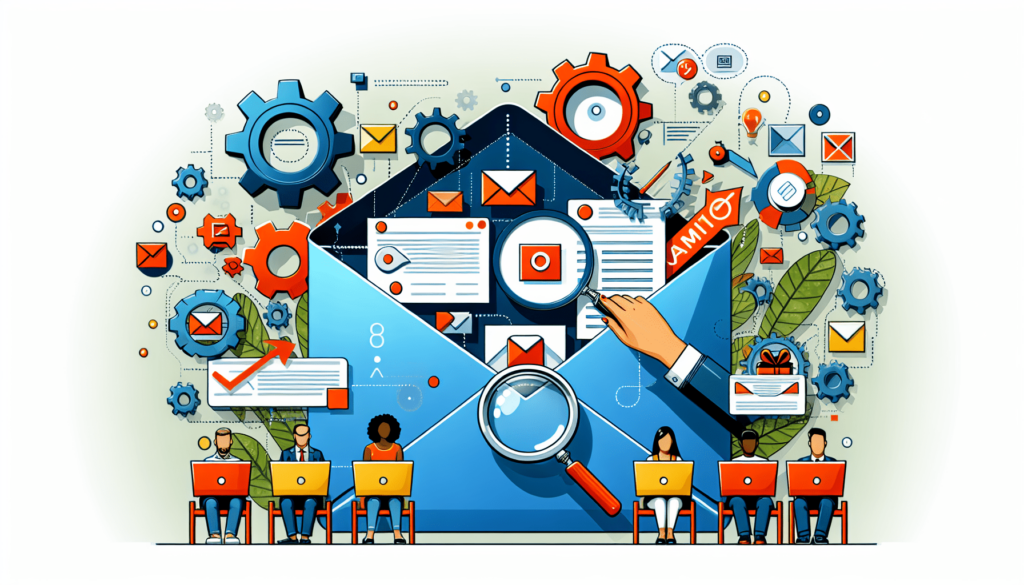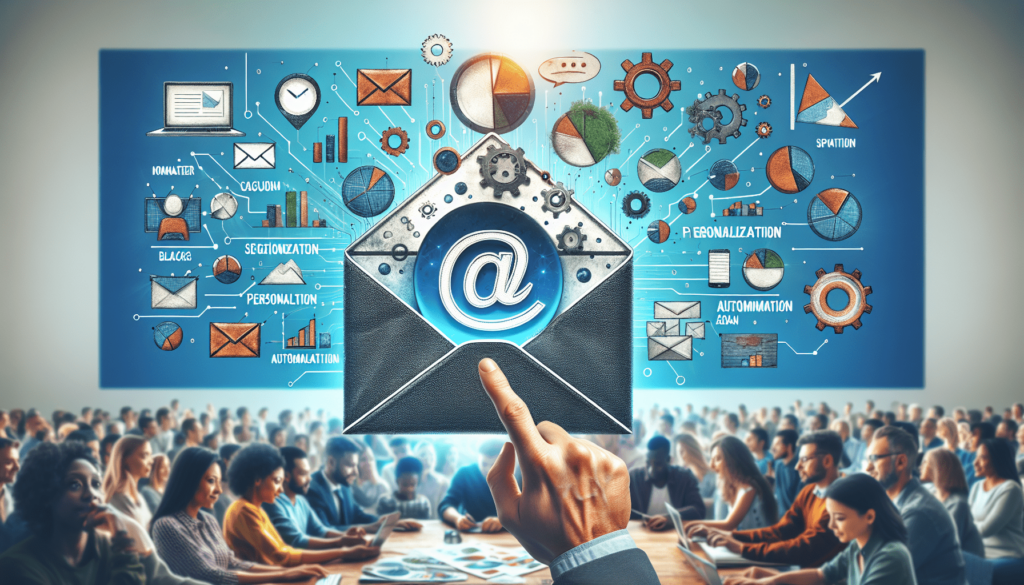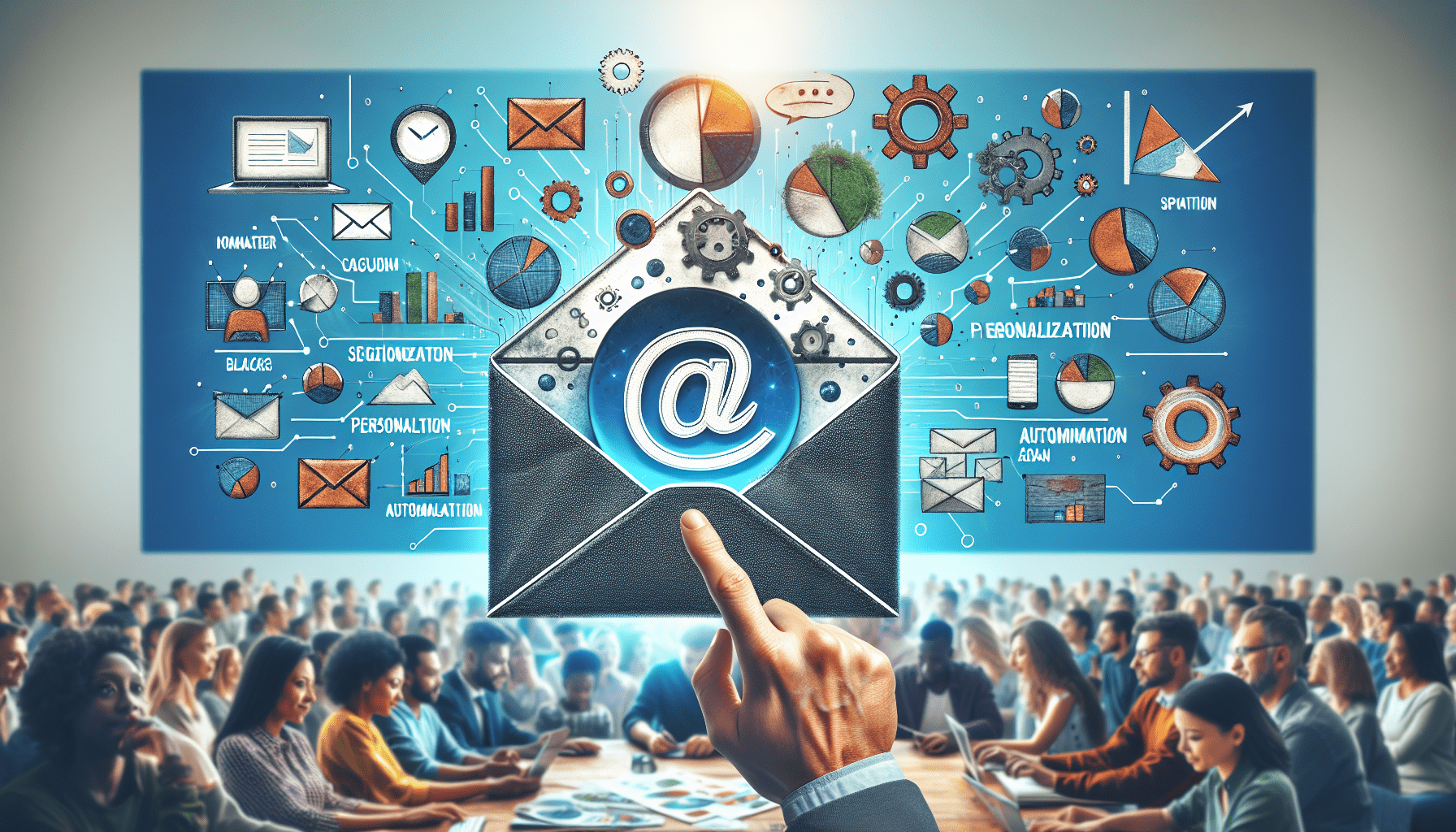Are you seeking effective ways to make money through email marketing? Look no further! We have curated a range of strategies for successful earnings using this powerful marketing tool. At BackersHub.com, we firmly believe in the potential for innovation and connection to drive profitability. With our expert guidance, you will discover how to capitalize on the possibilities that email marketing presents. Buckle up and get ready to boost your earnings with these tried and tested strategies!
Building a High-Quality Email List
Unlock Earning Power: My $7 Mega Link Secret Revealed!
Creating opt-in forms on your website
One of the first steps in building a high-quality email list is to create opt-in forms on your website. These forms serve as a gateway for visitors to provide their email addresses voluntarily and express interest in receiving communication from you. Opt-in forms can be strategically placed on your website, such as on the homepage, blog posts, or landing pages, to capture the attention of your visitors at various touchpoints. Make sure the opt-in forms are visually appealing, easy to navigate, and clearly communicate the value of signing up for your emails.
Offering incentives for email sign-ups
To encourage more people to sign up for your email list, it’s essential to offer incentives that provide value to your audience. These incentives can take the form of exclusive discounts, free downloadable resources, entry into giveaways or contests, or access to members-only content. By providing something valuable in exchange for their email addresses, you create a win-win situation where subscribers feel they are receiving something worthwhile, and you gain more subscribers for your email list.
Segmenting your email list
Segmenting your email list is a crucial step in ensuring that your emails are targeted and relevant to your subscribers’ interests. By dividing your email list into segments based on demographics, preferences, or behavior, you can send customized content that resonates with specific groups of subscribers. This not only improves engagement rates but also enhances the overall user experience. For example, if you have an online clothing store, you can segment your list by gender, allowing you to send tailored emails featuring products that are more likely to be of interest to each segment.
Crafting Compelling Emails
Writing attention-grabbing subject lines
The subject line of an email is the first thing that subscribers see in their inbox, and it plays a significant role in determining whether they will open and engage with your email or not. To grab their attention, make your subject lines concise, compelling, and intriguing. Consider using action verbs, posing questions, or creating a sense of urgency. Personalization can also be effective, such as including the subscriber’s name or referencing their past interactions with your brand. Experiment with different subject lines and use A/B testing to analyze which ones have the highest open rates.
Personalizing emails for higher engagement
Personalization is a powerful tool in email marketing that can significantly impact engagement and conversion rates. By addressing subscribers by their names, referencing their past purchases, or tailoring content based on their preferences, you create a sense of individualized connection and relevance. Personalized emails make subscribers feel valued and understood, fostering a stronger relationship between your brand and the recipient. Utilize the data you have collected about your subscribers to deliver content that is tailored to their specific needs and interests.
Using persuasive copywriting techniques
Effective copywriting is essential in crafting compelling emails that drive action. It’s crucial to communicate your message clearly and concisely while tapping into the emotional needs and desires of your subscribers. Use persuasive techniques such as storytelling, social proof, and scarcity to create a sense of urgency and motivate your subscribers to take the desired action. Incorporate strong call-to-action statements that clearly state what you want the reader to do, whether it’s making a purchase, signing up for an event, or simply clicking a link.
Designing User-Friendly Email Templates
Choosing a clean and responsive design
When designing your email templates, it’s essential to choose a clean and professional design that aligns with your brand identity. Cluttered or overly complex designs can distract from the main message and make the email difficult to read. Ensure that your templates are responsive, meaning they adapt to different screen sizes and devices. A well-designed and visually appealing email creates a positive impression and enhances the user experience, increasing the likelihood of engagement and conversion.
Optimizing for mobile devices
With the increasing use of smartphones and tablets, it’s crucial to optimize your email templates for mobile devices. Mobile optimization ensures that your emails display correctly and are easily navigable on smaller screens. Use a responsive design that adjusts the layout, font size, and images to fit different screen sizes. Pay attention to the loading speed of your emails, as slow-loading emails can lead to frustration and a higher likelihood of unsubscribes. Test your emails on various mobile devices and email clients to ensure compatibility.

Life-Changing: How a Simple Link Brought Me Financial Freedom!
Including clear call-to-action buttons
A clear and compelling call-to-action (CTA) is essential in guiding your subscribers towards the desired action. Whether it’s making a purchase, signing up for an event, or downloading a resource, the CTA should be prominent and stand out visually. Use contrasting colors, bold fonts, and persuasive copy to draw attention to the CTA button. Make sure the CTA is easy to click on both desktop and mobile devices. Ideally, your email should have a single primary CTA to avoid overwhelming the reader with too many options.
Automation and Email Sequences
Implementing automated email campaigns
Automated email campaigns offer a time-saving and efficient way to nurture leads and engage with your subscribers. By setting up trigger-based emails that are automatically sent based on specific actions or events, you can provide timely and relevant information to your audience. For example, you can send a welcome email series to new subscribers, abandoned cart reminders, or follow-up emails after a purchase. Automated campaigns help maintain consistent communication with your subscribers, fostering a stronger relationship and driving conversion.
Creating personalized email sequences
Email sequences are a series of emails designed to guide subscribers through a predefined journey, such as onboarding new customers, nurturing leads, or promoting a specific product or service. Personalizing these sequences based on the subscriber’s behavior or preferences can significantly increase engagement and conversion rates. Map out the sequence carefully, ensuring that each email builds upon the previous one and aligns with the desired outcome. Test different sequences and analyze the performance to optimize their effectiveness.
Nurturing leads through drip campaigns
Drip campaigns are a type of automated email sequence that focuses on nurturing leads over an extended period. These campaigns aim to cultivate relationships, build trust, and gradually move the lead further down the conversion funnel. By sending a series of targeted and relevant emails at predetermined intervals, you can provide valuable content, address pain points, and showcase the benefits of your products or services. Drip campaigns allow you to maintain consistent engagement with your leads, increasing the likelihood of conversion in the long run.
Testing and Optimization
Split testing subject lines and content
A/B testing, also known as split testing, is a powerful technique for optimizing your email campaigns. By creating two versions of your emails and testing different subject lines, content, or designs, you can identify which variables have the greatest impact on engagement and conversion rates. Test one variable at a time to accurately determine its effectiveness. Monitor the performance metrics, such as open rates, click-through rates, and conversion rates, to determine the winning variation. Continuously testing and optimizing your emails ensures that you are delivering the most effective content to your audience.
Analyzing email engagement metrics
Analyzing email engagement metrics is crucial for understanding how well your email campaigns are performing. Track metrics such as open rates, click-through rates, bounce rates, and conversion rates to assess the effectiveness of your emails. Look for trends and patterns that indicate areas of improvement. For example, if you notice low open rates, it may indicate that your subject lines need improvement. Use these insights to make data-driven decisions and optimize your email campaigns for better results.
Continuously optimizing email campaigns
Optimization is an ongoing process in email marketing. Even if you have successful campaigns, there is always room for improvement. Continuously monitor your email performance, test new strategies, and analyze the results to identify areas for optimization. Pay attention to subscriber feedback, such as replies or survey responses, to gain insights into their preferences and expectations. By staying proactive and responsive to your audience’s needs, you can continually refine your email campaigns and maximize their impact.
Offering Valuable Content
Providing exclusive offers and discounts
One of the most effective ways to engage and retain subscribers is by providing exclusive offers and discounts. Offer special promotions or discounts to your email subscribers that are not available to the general public. This creates a sense of exclusivity and rewards their loyalty. Make sure the offers are enticing and clearly communicated in your emails. Additionally, segment your email list to provide personalized offers based on each subscriber’s preferences or purchase history, further increasing the relevance and value of the promotion.

Daily Payday From Your Couch? Try now for the cost of a cup of coffee!
Sharing educational resources and guides
Email marketing is not just about promotions and sales pitches; it’s also an opportunity to provide valuable educational content to your subscribers. Share informative articles, guides, tutorials, or videos that address their pain points, answer common questions, or provide valuable insights. By positioning yourself as an industry expert and offering valuable resources, you build trust and credibility with your subscribers. Educational content enhances the overall user experience and keeps your audience engaged with your brand.
Offering freebies and giveaways
Everybody loves freebies and giveaways! Offering freebies or running periodic giveaways is an effective way to engage with your subscribers and encourage them to take action. For example, you can offer a free ebook, template, or tool that provides value to your audience. Run contests or sweepstakes where subscribers have a chance to win a prize by completing a specific action, such as sharing the email, referring a friend, or making a purchase. Freebies and giveaways not only reward your subscribers but also increase brand visibility and attract new subscribers.
Segmentation and Targeting
Dividing your email list based on demographics
Segmenting your email list based on demographics such as age, gender, location, or profession allows you to deliver more targeted and relevant content to your subscribers. By understanding the unique needs, preferences, and challenges of each segment, you can tailor your emails to resonate with their specific characteristics. For example, if you have a clothing brand, you can send different email campaigns featuring winter collections to subscribers located in colder regions and summer collections to those in warmer climates. Demographic segmentation improves engagement rates and enhances the overall user experience.
Personalizing content based on customer preferences
In addition to demographic segmentation, personalizing content based on customer preferences is essential in delivering a tailored and engaging experience. Collect data on your subscribers’ past purchases, browsing behavior, or interests to customize the product recommendations or content you send. Use automation tools and dynamic content features to create personalized emails that dynamically change based on each subscriber’s preferences. By providing hyper-relevant content, you increase the chances of conversion and long-term customer loyalty.
Tailoring offers to specific segments
Tailoring offers to specific segments goes hand in hand with segmentation and personalization. Once you have divided your email list into different segments, you can create targeted offers that cater to the preferences and characteristics of each group. For example, if you have segmented your list by age, you can offer different discounts or promotions for younger customers versus older customers. By tailoring your offers, you show that you understand the unique needs of each segment, making your emails more impactful and driving higher conversion rates.
Email Frequency and Timing
Finding the optimal email frequency
Determining the optimal email frequency is a balancing act. Sending too few emails may result in your subscribers forgetting about your brand, while sending too many can lead to email fatigue and increased unsubscribes. To find the sweet spot, consider your audience’s preferences, the nature of your business, and the content you have to offer. Experiment with different frequencies, such as weekly, bi-weekly, or monthly, and monitor the engagement metrics to gauge your subscribers’ response. Pay attention to any feedback or unsubscribe trends to refine your email frequency.
Testing different times for highest open rates
Timing plays a crucial role in email marketing success. Different audiences may have different preferred times for checking their emails, so it’s essential to test various sending times to identify the optimal window for highest open rates. Consider factors such as time zones, the industry you are in, and the nature of your content. Analyze the open rates for emails sent at different times of the day and different days of the week. By understanding your subscribers’ habits and preferences, you can maximize the visibility and impact of your emails.
Avoiding excessive emails to prevent unsubscribes
While it’s important to maintain regular communication with your subscribers, bombarding them with excessive emails can result in increased unsubscribes and decreased engagement rates. Be mindful of the frequency and relevance of your emails. Ensure that each email provides value and a clear purpose. If you have multiple messages to convey within a short period, consider combining them into a single email or creating a digest newsletter. Regularly monitor your unsubscribe rates and take subscriber feedback into account to strike the right balance between regular communication and respecting your subscribers’ inbox.
Email List Maintenance
Shocking! This one link can pay you time and time again!
Regularly cleaning your email list to remove inactive subscribers
Regularly cleaning your email list is crucial for maintaining a high-quality and engaged subscriber base. Remove inactive subscribers who have not opened or clicked on your emails for an extended period. Inactive subscribers not only skew your engagement metrics but may also negatively impact your email deliverability. Consider setting a timeframe, such as six months, after which inactive subscribers are removed from your list. By keeping your list clean and up-to-date, you can focus your efforts on engaging with active subscribers who are more likely to convert.
Managing email bounces and unsubscribes
Email bounces and unsubscribes are a natural part of email marketing, and managing them effectively is essential for maintaining a healthy email list. Actively monitor your bounce rates and unsubscribe rates to identify any underlying issues with your email campaigns or list quality. Analyze the reasons for unsubscribes and look for patterns or areas for improvement. Make it easy for subscribers to unsubscribe if they no longer find value in your emails, as this helps maintain a positive brand image and ensures compliance with email marketing regulations.
Ensuring compliance with email marketing regulations
Compliance with email marketing regulations is not only necessary to avoid legal issues but also to build trust and credibility with your subscribers. Familiarize yourself with the laws and regulations related to email marketing, such as the CAN-SPAM Act or the General Data Protection Regulation (GDPR), depending on your target audience and geographic location. Ensure that you have explicit permission from subscribers before adding them to your email list and provide a clear and easy way for them to unsubscribe. Include a physical mailing address and accurate sender information in each email to maintain transparency.
Analyzing Conversion Rates
Tracking email conversion rates
Tracking email conversion rates is vital for evaluating the effectiveness of your email campaigns in driving desired actions, such as purchases, sign-ups, or downloads. Set up conversion tracking in your email marketing platform or website analytics tool to attribute conversions to specific email campaigns or sequences. Monitor the conversion rates for different segments, subject lines, or content variations to identify what resonates best with your audience. Use the insights gained from tracking conversion rates to optimize your emails and maximize your return on investment.
Monitoring click-through rates
Click-through rates (CTR) measure the percentage of subscribers who click on links within your emails, indicating their engagement and interest in your content. Monitoring CTR is crucial for evaluating the effectiveness of your call-to-action statements, content placement, and overall design. Low CTR may indicate a lack of engagement or ineffective messaging. Experiment with different approaches, such as button vs. text links or different placements, to improve click-through rates. Analyze click patterns and track which links resonate most with your audience to tailor future content and optimize engagement.
Understanding the impact of email marketing on sales
Understanding the impact of email marketing on sales is essential for measuring the return on investment and determining the overall effectiveness of your campaigns. Track and analyze sales data to identify how many conversions are directly attributed to your email efforts. Use unique identifiers or tracking codes to trace sales back to specific email campaigns or sequences. By quantifying the revenue generated from email marketing, you can assess its impact on your business’s bottom line and allocate resources accordingly.

